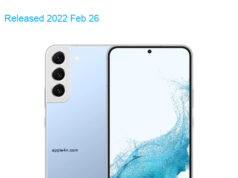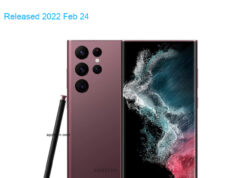| Brand | Oppo |
| Model | Realme 10 5G 2022 Dual SIM TD-LTE CN 128GB |
| Released | 2022 Nov |
| Announced | 2022 Nov |
| Hardware Designer | BBK Electronics |
| Manufacturer | BBK Electronics |
| General Extras | Haptic touch feedback |
| Device Category | Smartphone |
| Width | 75.1 mm |
| Height | 164.4 mm |
| Depth | 8.1 mm |
| Dimensions | 2.96×6.47×0.32 inches |
| Mass | 191 g |
| Platform | Android |
| Operating System | Google Android 12 (S) |
| Software Extras | Voice Command , Navigation software , Intelligent personal assistant , Face Recognition |
| CPU Clock | 2200 MHz |
| CPU | MediaTek Dimensity 700 MT6833V/ZA, 2020, 64 bit, octa-core, 7 nm, ARM Mali-G57 GPU |
| RAM Type | LPDDR4x SDRAM |
| RAM Capacity (converted) | 8 GiB RAM |
| Non-volatile Memory Interface | UFS 2.2 |
| Non-volatile Memory Capacity (converted) | 128 GB ROM |
| Display Notch | 1-notch |
| Display Diagonal | 167.6 mm |
| Resolution | 1080×2408 |
| Horizontal Full Bezel Width | 6.51 mm |
| Display Area Utilization | 85.0% |
| Pixel Density | 400 PPI |
| Display Type | Color IPS TFT LCD display |
| Number of Display Scales | 16.8M |
| Display Refresh Rate | 90 Hz |
| Scratch Resistant Screen | Yes |
| Graphical Controller | ARM Mali-G57MP2 |
| GPU Clock: | 955 MHz |
| A/V Out | No |
| Microphone(s) | stereo |
| Loudspeaker(s): | mono |
| Audio Output: | 3.5mm |
| Supported Cellular Bands | GSM850 , GSM900 , GSM1800 , GSM1900 , UMTS2100 (B1) , UMTS1900 (B2) , UMTS1700/2100 (B4) , UMTS850 (B5) , UMTS800 (B6) , UMTS900 (B8) , UMTS800 (B19) , CDMA800 (BC0) , LTE2100 (B1) , LTE1900 (B2) , LTE1800 (B3) , LTE1700/2100 (B4) , LTE850 (B5) , LTE2600 (B7) , LTE900 (B8) , LTE800 (B19) , LTE800 (B20) , LTE700 (B28) , TD-LTE2000 (B34) , TD-LTE2600 (B38) , TD-LTE1900 (B39) , TD-LTE2300 (B40) , TD-LTE2500 (B41) , NR2100 (N1) , NR850 (N5) , NR900 (N8) , NR700 (N28) , TD-NR2500 (N41) , TD-NR3700 (N77) , TD-NR3500 (N78) bands |
| Supported Cellular Data Links | GPRS , EDGE , UMTS , HSUPA , HSUPA 5.8 , HSDPA , HSPA+ 21.1 , DC-HSDPA 42.2 , cdmaOne , CDMA2000 1x , CDMA2000 1xEV-DO , LTE , LTE 100/50 , LTE 150/50 , LTE 300/50 , LTE 600/50 , NR 1500 , NR 2600 data links |
| SIM Card Slot | Nano-SIM (4FF) |
| Complementary Phone Services | Voice transmission , Voice speaker , Vibrate , Speakerphone , ANC , HD Voice , VoLTE |
| Dual Cellular Network Operation | Dual standby |
| Sec. Supported Cellular Networks: | GSM850 , GSM900 , GSM1800 , GSM1900 , UMTS2100 (B1) , UMTS1900 (B2) , UMTS1700/2100 (B4) , UMTS850 (B5) , UMTS800 (B6) , UMTS900 (B8) , UMTS800 (B19) , CDMA800 (BC0) , LTE2100 (B1) , LTE1900 (B2) , LTE1800 (B3) , LTE1700/2100 (B4) , LTE850 (B5) , LTE2600 (B7) , LTE900 (B8) , LTE800 (B19) , LTE800 (B20) , LTE700 (B28) , TD-LTE2000 (B34) , TD-LTE2600 (B38) , TD-LTE1900 (B39) , TD-LTE2300 (B40) , TD-LTE2500 (B41) , NR2100 (N1) , NR850 (N5) , NR900 (N8) , NR700 (N28) , TD-NR2500 (N41) , TD-NR3700 (N77) , TD-NR3500 (N78) |
| Sec. Supported Cellular Data Links: | GPRS , EDGE , UMTS , HSUPA , HSUPA 5.8 , HSDPA , HSPA+ 21.1 , DC-HSDPA 42.2 , cdmaOne , CDMA2000 1x , CDMA2000 1xEV-DO , LTE , LTE 100/50 , LTE 150/50 , LTE 300/50 , LTE 600/50 , NR 1500 , NR 2600 |
| Sec. SIM Card Slot | Nano-SIM (4FF) |
| Touchscreen Type | Capacitive multi-touch screen |
| Expansion Interfaces | TransFlash , microSD , microSDHC , microSDXC |
| USB | USB 2.0 |
| USB Services | USB charging , USB fast charging , USB Host , USB OTG 1.3 , USB PD , USB PD 2.0 |
| USB Connector | USB C reversible |
| Max. Charging Power | 33.0 W |
| Bluetooth | Bluetooth 5.2 |
| Wireless LAN | 802.11a , 802.11b , 802.11g , 802.11n , 802.11ac |
| Wireless Services | Wi-Fi Tethering , WiDi |
| FM Radio Receiver | No |
| Complementary Satellite Services | Simultaneous GPS , A-GPS , Geotagging , QuickGPS |
| Supported GLONASS protocol(s) | L1OF |
| Supported BeiDou system (BDS) | B1I BeiDou receiver |
| Camera Placement | Rear |
| Camera Image Sensor | BSI CMOS |
| Image Sensor Pixel Size | 0.64 micrometer |
| Number of effective pixels | 50.1 MP camera |
| Aperture (W) | f/1.80 |
| Zoom | 1.0 x optical zoom |
| Focus | PD AF |
| Video Recording | 1920×1080 pixel |
| Flash | single LED |
| Camera Extra Functions | Pixel unification , HDR photo , Red-eye reduction , Slow motion video , Burst mode , Touch focus , Panorama Photo , Face detection , Face tagging , Smile detection , Face retouch , Intelligent scene detection |
| Aux. Camera Image Sensor | CMOS |
| Aux. Cam. Image Sensor Pixel Size | 1.75 micrometer |
| Aux. Camera Number of Pixels | 1.9 MP aux. cam |
| Aux. Camera Aperture (W) | f/2.40 |
| Aux. Camera Extra Functions | Burst mode , Macro mode |
| Aux. 2 Camera Image Sensor | Mono CMOS |
| Aux. 2 Camera Aperture (W) | f/2.80 |
| Aux. 3 Camera Image Sensor | No |
| Aux. 4 Camera Image Sensor | No |
| Secondary Camera Placement | Front |
| Secondary Camera Sensor | BSI CMOS |
| Secondary Camera Number of pixels | 8.0 MP sec. cam |
| Secondary Aperture (W) | f/2.00 |
| Secondary Video Recording | 1920×1080 pixel |
| Secondary Camera Extra Functions | HDR photo , Burst mode , Panorama Photo , Face detection , Face tagging , Smile detection , Face retouch , Intelligent scene detection |
| Sec. Aux. Cam. Image Sensor | No |
| Built-in compass | Yes |
| Built-in accelerometer | Yes |
| Built-in gyroscope | Yes |
| Additional sensors | FP sensor , L sensor , P sensor |
| Protection from solid materials | Yes |
| Protection from liquids | Yes |
| Battery | Li-ion polymer (LiPo) |
| Nominal Battery Voltage | 3.87 Volts |
| Nominal Battery Capacity | 5000 mAh battery |
| Nominal Battery Energy | 19.35 Wh |
| Market Countries | China |
| Market Regions | Asia |
| Price | 181.86 USD |
| Added | 2025-02-08 |
Specifications data description of this 📱Oppo Realme 10 5G 2022 Dual SIM TD-LTE CN 128GB📱
Title: Oppo Realme 10 5G 2022 Dual SIM TD-LTE CN 128GB – A Comprehensive Specification Overview
Introduction
————
In 2022, Oppo unveiled a new addition to their Realme series, the Oppo Realme 10 5G 2022 Dual SIM TD-LTE CN 128GB, designed for seamless connectivity and powerful performance. This blog post will provide a detailed specification review of this device, covering the network, launch, body, display, OS, chipset, CPU, GPU, memory, camera, sound, comms, features, and battery.
Lineup
——
As part of the Oppo Realme series, the Oppo Realme 10 5G 2022 Dual SIM TD-LTE CN 128GB device offers high-performance and 5G connectivity at a competitive price point.
Design
—–
The Oppo Realme 10 5G boasts a sleek and modern design with a 6.5-inch display, providing an immersive visual experience. The device has a compact and ergonomic body, making it comfortable to hold and use in various scenarios.
Specifications
————-
🌐**NETWORK**:
* Network technology: GSM / HSPA/LTE / 5G
* Dual SIM (Nano-SIM, dual stand-by)
📅**LAUNCH**:
* Announced: 2022, February
* Status: Available
🏋️**BODY**:
* Dimensions: 162.2 x 74.2 x 8.5 mm
* Weight: 189 g
* Build: Glass front, plastic back, plastic frame
* Splash resistant
* Colors: Midnight Black, Aurora Blue, Silver
🌈 **DISPLAY**:
* Size: 6.5 inches
* Resolution: 1080 x 2400 pixels, 20:9 ratio
* Type: IPS LCD, 120Hz refresh rate
* Protection: Corning Gorilla Glass 5
🤖 **OS**:
* Android 11, ColorOS 11.1
🛠️ **Chipset**:
* MediaTek Dimensity 700 5G (7 nm)
🚀 **CPU**:
* Octa-core (2×2.2 GHz Cortex-A76 & 6×2.0 GHz Cortex-A55)
🎮 **GPU**:
* Mali-G57 MC2
🧠 **MEMORY**:
* 4GB, 6GB, or 8GB RAM
* 128GB internal storage
📷 **CAMERA**:
* Rear camera:
+ 48 MP (wide)
+ 2 MP (macro)
+ 2 MP (depth)
* Front camera:
+ 8 MP (wide)
🔈 **SOUND**:
* Loudspeaker: Yes
* 3.5mm jack: No
📡 **COMS**:
* WLAN: Wi-Fi 802.11 a/b/g/n/ac
* Bluetooth: 5.0, A2DP, LE
* GPS: Yes, with A-GPS, GLONASS, GALILEO, BDS
* NFC: Yes
* Radio: No
* USB: USB Type-C 2.0, USB On-The-Go
🎁 **FEATURES**:
* Sensors: Fingerprint (side-mounted), accelerometer, gyro, proximity, compass
* Messaging: SMS, MMS, Email, IM
* Browser: HTML5
* MP4/H.264 player
* MP3/WAV/eAAC+/FLAC player
* Photo/video editor
* Document editor
🔋 **BATTERY**:
* Capacity: 5000mAh
* Fast charging: 18W
Conclusion
———
The Oppo Realme 10 5G 2022 Dual SIM TD-LTE CN 128GB packs powerful hardware in a sleek and modern design, making it an attractive option for users seeking high-performance and 5G connectivity. We invite you to share your thoughts and experience with the Oppo Realme 10 5G in the comments section!








